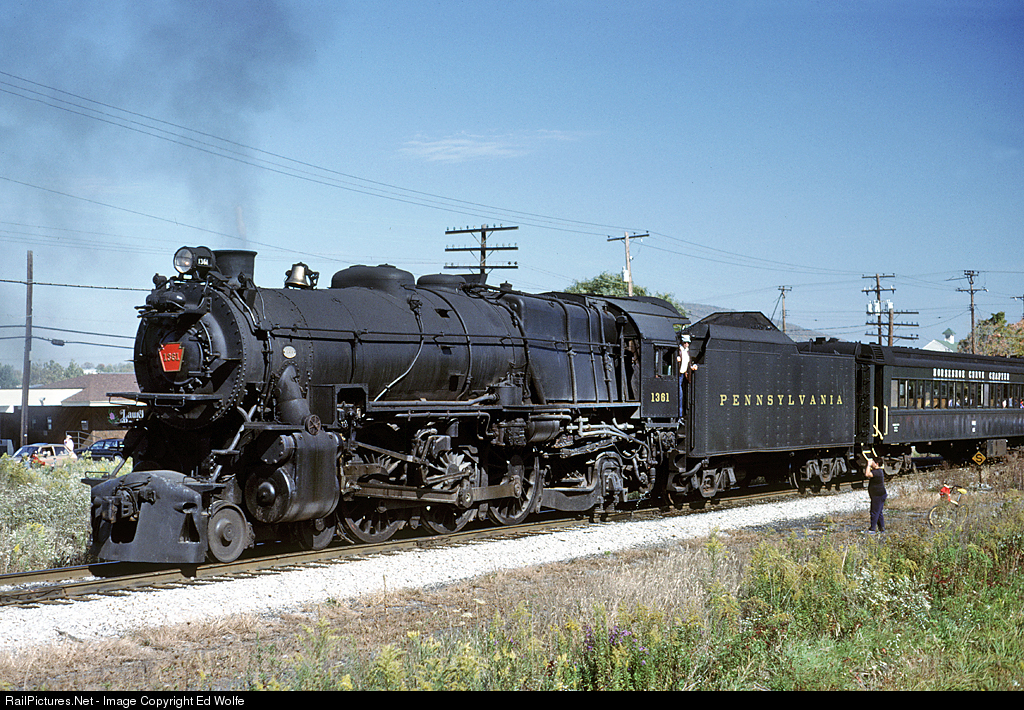PRR provides integrated communications solutions that help people make informed decisions and build stronger, more inclusive communities. The Pennsylvania Railroad's 52 T1 class duplex-drive 4-4-4-4 steam locomotives, introduced in 1942 (2 prototypes) and 1945-1946 (50 production), were the last steam locomotives built for the PRR and arguably its most controversial.They were ambitious, technologically sophisticated, powerful, fast and distinctively streamlined by Raymond Loewy.However, they were also prone to wheelslip both.

Production Rule Representation The Production Rule Representation (PRR) fulfills a number of requirements related to business rules, software systems, OMG standards, and other rule standards. It provides a standard production rule representation that is compatible with rule engine vendors? Definitions of production rules. The obvious reason for PRR diversity lies in the diversity of their ligands; PAMPs might be lipoproteins, carbohydrates, or nucleic acids from protozoa, bacteria, fungi, or viruses. Furthermore, PRRs also differ by their subcellular localization, and they might initiate distinct signaling cascades. A person who actually killed, intended to kill, or attempted to kill the victim and who is convicted under s. 782.04 of a capital felony, or an offense that was reclassified as a capital felony, which was committed before the person attained 18 years of age shall be punished by a term of imprisonment for life if, after a sentencing hearing conducted by the court in accordance with s.
Upon a microbial infection, the body needs to be alerted to the presence of potential harmful pathogens. This is achieved through specialised receptors known as pattern recognition receptors (PPRs) which are predominantly expressed on immune cells.
These receptors recognize conserved molecular structures known as pathogen- or damage-associated molecular patterns (PAMPs and DAMPs) that are found in microbes such as bacteria, viruses, parasites or fungi. These motifs are usually specific to the micro-organism (i.e. they are not present in the host and therefore are considered as “non-self”). They are also essential for its viability and thus less subjected to changes which would make otherwise their recognition by the host more difficult.

One of the best characterized PAMP is lipopolysaccharide (LPS), a specific component of the gram – bacteria which is recognized by Toll-like receptor TLR4.
Below are some examples of PAMPs (Figure 1):
Prr Army

Glycans
- Lipoglycans such as lipopolysaccharide, a component of the gram- bacteria outer membrane
- Peptidoglycans such as bacterial muramyl dipeptide
- b-1,3-glucans from the cell wall of various fungi species
Proteins

- bacteria flagellin
Nucleic acids (RNA or DNA)

Microbial nucleic acids usually have features that are recognized as non-self by the host.
- Location: microbial nucleic acids may be found in specific location such as endosomes where normally the host nucleic acids are not present. For instance, TLR7 recognize viral RNA in the endosomes.
- Properties: microbial nucleic acids have often specific structure, length or modification such as bacterial DNA which contains unmethylated repeats of dinucleotide CpG or viral double-stranded (ds) or single-stranded (ss) RNA.
In order to detect pathogens such as bacteria and viruses the immune system is equipped with receptors called pattern recognition receptors (PRRs) that are specialised in their recognition. These receptors are a key element of the innate immune system. They are mainly expressed by antigen presenting cells such as dendritic cells and macrophages, but they are also found in other immune and non-immune cells.
The PRRs are divided into four families:
- Toll-like receptors (TLR)
- Nucleotide-binding oligomerization domain-like receptors (NLR)
- C-type lectin receptors (CLR)
- RIG-1 like receptors (RLR)
These receptors are strategically localised in the cell. There are present at the cell surface to recognise extracellular pathogens such as bacteria or fungi, in the endosomes where they sense intracellular invaders such as viruses and finally in the cytoplasm.
These receptors recognise conserved molecular structures of pathogens. These motifs called pathogen- or microbe-associated molecular patterns (PAMPs or MAMPs) are usually specific to the microorganism and essential for its viability. PAMPs that have been identified so far are proteins (e.g. bacterial flagellin), nucleic acids (e.g. viral ssRNA) or glycans (e.g. bacterial lipopolysaccharide (LPS)).
The four PRR families usually differ in their ligand recognition, signal transduction and sub-cellular localisation (Figure). Upon activation, they induce various cellular responses including the transcription of several genes that ultimately will result in the elimination of the pathogen. They also often cooperate with each other to ensure that the response is optimum. Besides their role in innate immunity, some of these receptors (e.g. NLR) are also involved in sensing “danger” signals resulting from perturbations of normal cellular processes.
Prrn
© The copyright for this work resides with the BSI